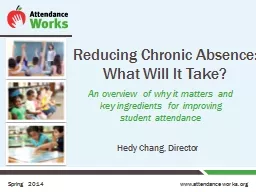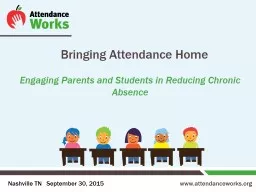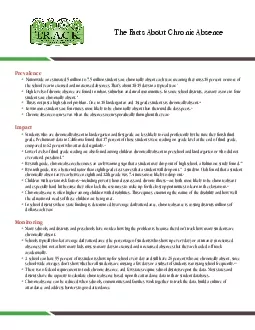PPT-Reducing Chronic Absence: What Will It Take? An overview of why it matters and key ingredients
Author : celsa-spraggs | Published Date : 2019-11-03
Reducing Chronic Absence What Will It Take An overview of why it matters and key ingredients for improving student attendance Spring 2014 Hedy Chang Director Unpacking
Presentation Embed Code
Download Presentation
Download Presentation The PPT/PDF document "Reducing Chronic Absence: What Will It T..." is the property of its rightful owner. Permission is granted to download and print the materials on this website for personal, non-commercial use only, and to display it on your personal computer provided you do not modify the materials and that you retain all copyright notices contained in the materials. By downloading content from our website, you accept the terms of this agreement.
Reducing Chronic Absence: What Will It Take? An overview of why it matters and key ingredients: Transcript
Download Rules Of Document
"Reducing Chronic Absence: What Will It Take? An overview of why it matters and key ingredients"The content belongs to its owner. You may download and print it for personal use, without modification, and keep all copyright notices. By downloading, you agree to these terms.
Related Documents














